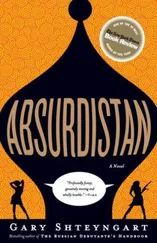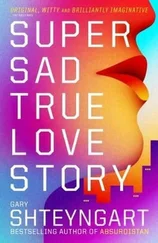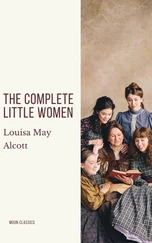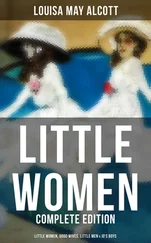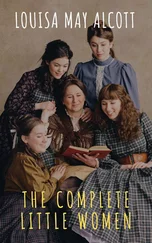“Attack warning is for bloody real!”
And then in the matter-of-fact tones of a BBC announcer: “The first dust settles on Sheffield. It’s an hour and twenty-five minutes after the attack. This level of attack has broken most of the windows in Britain. Many roofs are open to the sky. Some of the lethal dust gets in. In these early stages the symptoms of radiation sickness and the symptoms of panic are identical.”
Yes, they are quite identical. I am nearly shitting my pants. The problem with Threads , shot in the washed-out industrialized colors of its locale, is that it’s often hard to distinguish the city of Sheffield before the bomb hits from Sheffield after the devastation. The raw radioactive sheep actually looks like a step up from the shelled peas they’re serving at a family dinner in the opening shots; at least the mutton hasn’t been boiled to death.
The Day After , on the other hand, soft-pedals the devastation. The world falls apart far more brightly; how could it not with Steve Guttenberg (God, there he is again) playing one of the irradiated leads? But what I love about The Day After are the scenes of hardworking Missourians and Kansans reveling in their station-wagon lifestyles before the attack. Kids are riding their bikes through many-acred lawns, adults play horseshoes without worrying about mortgage payments, at the Kansas City Board of Trade soybean prices are up, and at Memorial General Hospital Dr. Jason Robards arranges for a patient to get his favorite flavor of ice cream. Vanilla. Whatever we’ve heard about the cost of living in Atlanta, Georgia, seems doubly true of this place. Here, my parents’ income if they don’t get a razvod— roughly $42,459.34 in 1983 dollars, give or take a cent — would make our family upper middle class. And then, fifty minutes into the film, when the enormous pines are uprooted by the nuclear blast, and the atomic flash reduces a wedding ceremony to so many skeletons, you really feel that these people have lost something special.
For its faults, The Day After is growing up in the early 1980s. This is our vocabulary. Pershing II. SAC Airborne Command. Launch on warning. “This is the Emergency Broadcast System.” “Sir, we need access to the keys and authentication documents.” “Confidence is high. I repeat, confidence is high.” “I want to confirm, is this an exercise? Roger. Copy. This is not an exercise.” “We have a massive attack against the U.S. at this time. Multiple ICBMs. Over three hundred missiles inbound now.” “Message follows. Alpha. Seven. Eight. November. Foxtrot. One. Five. Two. Two.” “We have execution from the President.” “Stand by. Unlock code inserted.” “Honey, we’re going to have to get used to things being a lot different. What matters is, we’re alive. And we’re together.” “The catastrophic events you have just witnessed are, in all likelihood, less severe than the destruction that would actually occur in the event of a full nuclear strike against the United States.” When I close my eyes I can almost feel the eerie still as Steve Guttenberg walks down a Kansas country road minutes before the Soviet missiles reach their targets. The children’s swings are empty. A crow buzzes over the state’s ample wheat.
My parents will buy a twenty-seven-inch salmon-colored Sony Trinitron, with a sleek remote control that would decimate the Zenith Space Command, just in time for Peter Jennings to tell us that the space shuttle Challenger has fallen into the ocean, but when The Day After comes out we have just a little nine-incher from a local dump, which we unveil for special occasions. So I start a subscription to TV Guide magazine to get a better grip on the important shows. I am not allowed to watch TV, but I am allowed the TV Guide , which we take to be America’s version of literature. The Day After , of course, is accompanied by many articles in the Guide , and I save that copy for many years to come, sometimes looking at the picture on the cover: a man shielding a boy from a mushroom cloud, the Lightman in my closet peering over my shoulder, so caught up in the horror he’s actually stroking my wounded ear. The boy will suffer flash blindness from the blast, and the thought of being alive in the post-nuclear-holocaust world without eyesight is devastating to me. The first order of business for when the Soviets attack — and I know those lying bastards, they will attack — is to get a good pair of sunglasses from the Stern’s department store in the Douglaston Mall.

“When the bombs fall, I will take my children outside so that we can die together instantly.” This is Mrs. A, a teacher of social studies and affiliated subjects. When she says that, I feel the true horror of nuclear war because Mrs. A is terribly attractive with her slim figure and bushel of kinky Ashkenazi hair, and her daughters, who attend SSSQ’s lower grades, are both similarly situated. All the cool kids and their mothers at SSSQ seem to know Mrs. A intimately, and she will often interrupt a monologue on the Suez Canal Crisis to say to her all-time favorite student, “Chava, remember when …”
Also, she is very keen to tell us that her daughter is an amazing ballerina and how she played Lincoln Center when she was eight months old or something of the sort. This love of child makes me tear up. My father once showed up to a parent-teacher conference where one of the teachers informed him that “Gary is very smart. We hear he reads Dostoyevsky in the original.”
“ Phh ,” Papa said. “Only Chekhov.”
So, after The Day After I keep replaying the bit about Mrs. A taking her kids out to meet the mushroom cloud. How could the Soviets possibly kill Mrs. A and her ballerina daughter? What would Jewish television personality Abba Eban have to say about this? Before she made that announcement, I had not been entirely anti — nuclear war. My research indicated that two of the Soviet missiles would target JFK and LaGuardia airports in Queens. SSSQ is geographically equidistant from the two airports, and the school’s glass-heavy modernist structure would probably buckle and split into shards from the initial blasts, burning up the siddur prayer books like so many blue pancakes, and certainly the subsequent radiation exposure would kill everyone with the exception of the rotund, self-insulated Rabbi Sofer.
So far so good.
Meanwhile, Little Neck does not lie next to any obvious targets, the nearest one would be the Brookhaven National Laboratory in faraway Suffolk County, where my father will soon be toiling on a component of Ronald Reagan’s new “Star Wars” missile defense program, and the Deepdale Gardens cooperative is made out of millennial bricks that can withstand a heat blast up to 1,125 degrees Fahrenheit, by my sober calculations. All I need is to have my sunglasses handy and to shelter from the radiation for a few weeks. Then I will emerge into a world without Hebrew school. In this world, with my Russian accent scrubbed away, and with the superior mathematical skills I have picked up from my father’s Soviet textbooks, I will help start a new Republican civilization along with my new American best friend, Jonathan.
That is right. I have a best friend.

Mrs. A runs something called “Pilot Program,” which is for the smartest kids in SSSQ, a number that can fit around a small dining table. For an entire school period, we geniuses are separated from the usual debility of the rest of the school and are sent to a teachers’ lounge, where there is a refrigerator stocked with sad teacher sandwiches and a pall of cigarette smoke to make us feel quite adult. It is very hard to figure out what Mrs. A’s “Pilot Program” is about. It is safe to say that my father’s dream for a heavy workload in theoretical physics and higher mathematics will not come true. Activities include making caramel candies in the mold of E.T.: The Extra-Terrestrial and discussing the TV special Something About Amelia , in which Ted Danson has sex with his own daughter. Mrs. A is a born conversationalist, and Pilot Program gives her a chance to free-associate while making baked goods. When someone mentions the Steven Spielberg movie Jaws , Mrs. A tells a fascinating story about an Israeli soldier caught in an explosion during the Yom Kippur War, who was left with nothing but three holes where his face should have been. We cautiously eat our E.T . caramels.
Читать дальше






